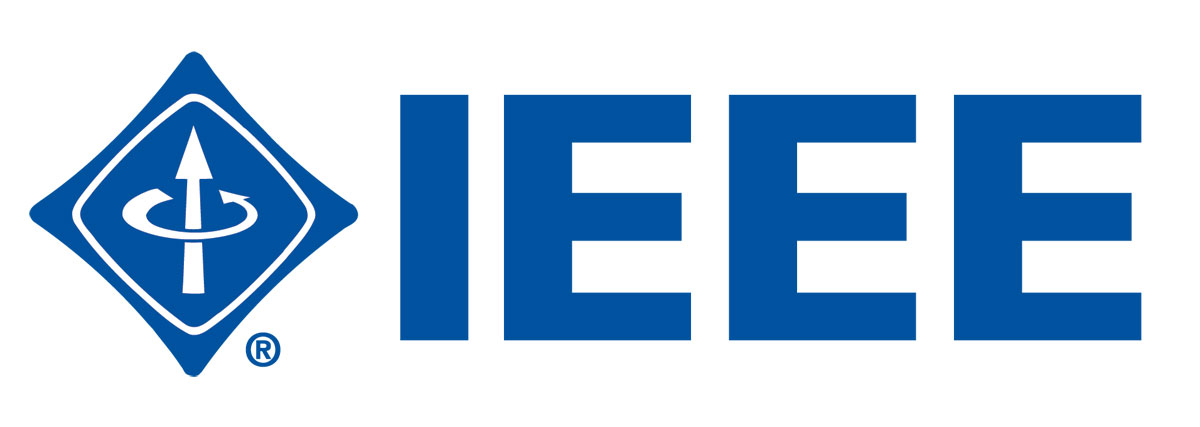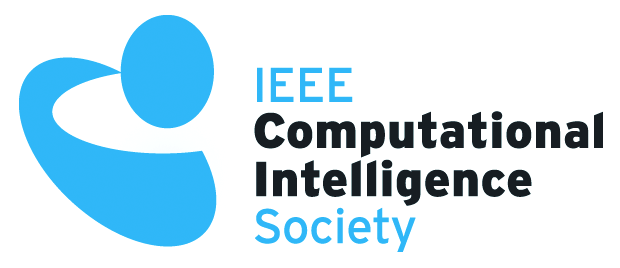Program
Sunday, August 18
| Time | Large Meeting Room (B1F 84) | Exhibition Room(B1F 63) |
| 9:00 | Registration (Large meeting room, B1F) | |
| 9:30 - 10:50 |
Special Session 1: Constructive Developmental Science: Two Endeavors toward Understanding Human Development |
Tutorial 1: Introduction to Computational brain-mind |
| 10:50 | Coffee break | |
| 11:10 - 12:30 |
Special Session 1: Constructive Developmental Science: Two Endeavors toward Understanding Human Development |
Tutorial 1: Introduction to Computational brain-mind |
| 12:30 - 13:50 |
Lunch (not provided) | |
| 13:50 - 15:50 |
Special Session 2: Training in Robotics for Development of Cognition (RobotDoC) |
Special Session 3: Constructing empathy: An Interdisciplinary Investigation |
| 15:50 | Coffee break | |
| 16:10 - 18:10 |
Tutorial 2: Language Acquisition and the Influence of Action Learning |
Tutorial 3: Action-Perception Cycles: Neuro-Dynamic Modeling and Robotics Experiments |
Monday, August 19
| Time | Middle-sized Assembly Hall (3F 300-500) | |
| 9:00 | Registration (Special room, 3F) | |
| 9:30 | Opening | |
| 9:50 - 10:50 |
Keynote 1: Herbert Jaeger |
|
| 10:50 | Coffee break | |
| 11:10 | Attentional Constraints and Statistics in Toddlers' Word Learning |
|
| 11:30 | Understanding Embodied Visual Attention in Child-Parent Interaction |
|
| 11:50 | Do beliefs about a robot's capabilities influence alignment to its actions? |
|
| 12:10 | Robot Learning Simultaneously a Task and How to Interpret Human Instructions |
|
| 12:30 - 13:50 |
Lunch (not provided) | |
| 13:50 | Salience-based reinforcement of a spiking neural network leads to increased syllable production |
|
| 14:10 | Learning Versatile Sensorimotor Coordination with Goal Babbling and Neural Associative Dynamics |
|
| 14:30 | Goal Babbling with Unknown Ranges: A Direction-Sampling Approach |
|
| 14:50 | Developing Learnability – the Case for Reduced Dimensionality |
|
| 15:10 | Coffee break | |
| 15:30 | Do humans need learning to read humanoid lifting actions? |
|
| 15:50 | Exploration strategies in developmental robotics: a unified probabilistic framework |
|
| 16:10 | Learning Stable Pushing Locations |
|
| 16:30 | Coffee break | |
| 16:50 - 18:20 |
Poster session 1 (with spotlights) | |
| |
||
| 18:50 - 20:20 |
Banquet in the "Heian" at the 4th floor of ANA Crowne Plaza | |
Tuesday, August 20
| Time | Middle-sized Assembly Hall (3F 300-500) |
| 9:00 | Registration (Special room, 3F) |
| 9:30 - 10:30 |
Keynote 2: Anne Fernald |
| 10:30 | Coffee break |
| 10:50 | Epigenetic adaptation through hormone modulation in autonomous robots |
| 11:10 | Impacts of environment, nervous system and movements of preterms on body map development: Fetus simulation with spiking neural network |
| 11:30 | Structural bootstrapping at the sensorimotor level for the fast acquisition of action knowledge for cognitive robots |
| 11:50 | Coffee break |
| 12:10 | Temporal Emphasis for Goal Extraction in Task Demonstration to a Humanoid Robot by Naive Users |
| 12:30 | Estimating Dynamic Properties of Objects from Appearance |
| 12:50 - 14:00 |
Lunch (not provided) |
| 14:00 - 15:00 |
Keynote 3: Yasuo Kuniyoshi |
| 15:00 | Coffee break |
| 15:20 | A generative probabilistic framework for learning spatial language |
| 15:40 | Co-learning nouns and adjectives |
| 16:00 | Grounded Lexicon Acquisition - Case Studies in Spatial Language |
| 16:20 | Talk by Aldebaran |
| 16:40 | Coffee break |
| 17:00 - 18:30 |
Poster session 2 (with spotlights) |
Wednesday, August 21
| Time | Middle-sized Assembly Hall (3F 300-500) | |
| 9:00 | Registration (Special room, 3F) | |
| 9:30 - 10:30 |
Keynote 4: Ichiro Tsuda |
|
| 10:30 | Coffee break | |
| 10:50 | Reinforcement Learning with State-Dependent Discount Factor |
|
| 11:10 | Transfer Learning for Direct Policy Search: a Reward Shaping Approach |
|
| 11:30 - 12:00 |
Closing & award ceremony (Small Assembly Hall) |
|
| 12:00 - 13:00 |
||
| 13:00 - 17:00 |
AMDTC-ICDL GB meeting (Meeting Room No. 4, B1F 24) |
Thursday, August 22
Lab-Tour at Osaka University
The following labs will be included in the tour:- Intelligent Robotics Laboratory, directed by Prof. Hiroshi Ishiguro
- Human Interface Laboratory, directed by Prof. Koh Hosoda
- Emergent Robotics Laboratory, directed by Prof. Minoru Asada.
Poster Session 1 (Monday, August 19, 16:50 - 18:20)
| Full papers with spotlight presentation | |
| Mon-1 | Learning to Reproduce Fluctuating Behavioral Sequences Using a Dynamic Neural Network Model with Time-Varying Variance Estimation Mechanism |
| Mon-2 | An Enactive Approach to Autonomous Agent and Robot Learning |
| Mon-3 | Learning the rules of a game: neural conditioning in human-robot interaction with delayed rewards |
| Mon-4 | Predictive coding and self-organization for unsupervised development of object recognition skills |
| Mon-5 | Emergence of Flexible Prediction-Based Discrete Decision Making and Continuous Motion Generation through Actor-Q-Learning |
| Mon-6 | Learning to recognize objects through curiosity-driven manipulation |
| Mon-7 | Towards a robotic model of the mirror neuron system |
| Mon-8 | Autonomous learning of active multi-scale binocular vision |
| Mon-9 | Aquila 2.0 - Software Architecture for Cognitive Robotics |
| Mon-10 | Building Specific Contexts for On-line Learning of Dynamical Tasks through Non-verbal Interaction |
| Abstracts and short papers | |
| Mon-11 | Grounding Abstract Action Words through the Hierarchical Organization of Motor Primitives |
| Mon-12 | The Significance of Social Input, Early Motion Experiences, and Attentional Selection |
| Mon-13 | Intrinsically Motivated Reinforcement Learning in Socio-Economic Systems: the Dynamical Analysis |
| Mon-14 | Explaining Neonate Facial Imitation from the Sensory Alignment in the Superior Colliculus |
| Mon-15 | Adaptive Reachability Assessment in the Humanoid Robot iCub |
| Mon-16 | Extracting image features in static images for depth estimation |
| Mon-17 | Continuous Adaptive Reinforcement Learning with the Evolution of Self Organizing Classifiers |
Poster Session 2 (Tuesday, August 20, 17:00 - 18:30)
| Full papers with spotlight presentation | |
| Tue-1 | Action Understanding using an Adaptive Liquid State Machine based on Environmental Ambiguity |
| Tue-2 | Tactile stimuli from amniotic fluid guides the development of somatosensory cortex with hierarchical structure using human fetus simulation |
| Tue-3 | Autonomous Reuse of Motor Exploration Trajectories |
| Tue-4 | Touch and Emotion: Modeling of developmental differentiation of emotion lead by tactile dominance |
| Tue-5 | Improving Implicit Communication In Mixed Human-Robot Teams With Social Force Detection |
| Tue-6 | Learning Semantic Components from Subsymbolic Multimodal Perception |
| Tue-7 | A Robot to Study the Development of Artwork Appreciation Through Social Interactions. |
| Tue-8 | Intuitive Human Robot Interaction based on unintentional synchrony: a psycho-experimental study |
| Tue-9 | Autonomous Learning of Domain Models using Two-Dimensional Probability Distributions |
| Tue-10 | Frustration as a way toward autonomy and self-improvement in robotic navigation. |
| Abstracts and short papers | |
| Tue-11 | Development of self-monitoring essential for vocal interactions in marmoset monkeys |
| Tue-12 | Towards understanding the origin of infant directed speech: A vocal robot with infant-like articulation |
| Tue-13 | Dynamic shift in isolating referents: From social to self-generated input |
| Tue-14 | Autonomous Learning Based on Depth Perception and Behavior Generation |
| Tue-15 | Learning Spatial Relations between Objects From 3D Scenes |
| Tue-16 | Combining Synchrony and shape detection to sustain the robot focus of attention on a selected human partner |






